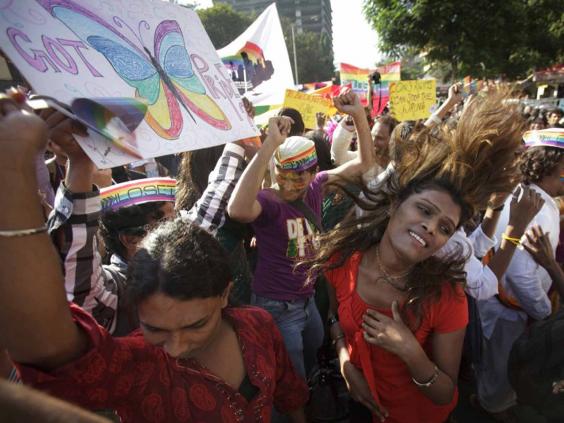India: More LGBTI-friendly, still contradictory
Colin Stewart is a 45-year journalism veteran living in Southern…

India has become much more accepting of LGBTI people in recent decades, says author Zareer Masani, an India native, though same-sex intimacy remains illegal.
“Indian politicians are in no hurry to debate a reform that would annoy religious extremists. And yet India, always a land of contradictions, allows Gay Pride marches in most major cities, has vibrant gay pressure groups and publications and officially accepts people who are transgender,” Masani writes in The Independent. Masani describes himself as “a sort of sexual migrant in the 1970s” from India to Britain.
His article about a trip to his homeland comes at a time of clashing priorities and conflicting initiatives, such as:
- The country has an anti-sodomy law, known as Section 377, which has been on the books since India was a British colony.
- That law was overturned by the Delhi High Court in 2009.
- The Delhi High Court’s decision was overruled in 2013 by the Indian Supreme Court, reinstating the law.
- In February, the Supreme Court agreed to review its own 2013 decision.
- In the Indian state of Karnataka, transgender people are fighting Section 36A of the State Police Act (introduced in 2011) which specifically targets transgender people under suspicion of “kidnapping or emasculating boys, committing unnatural offences, or any other offences.”
- A new initiative was announced to train and employee LGBT community members as taxi drivers for ‘Wings Rainbow.’
- A 15-year-old student set himself on fire after suffering harassment and abuse from neighbors who saw him being intimate with another boy. Human Rights Watch South Asia Director Meenakshi Ganguly said that his attempted suicide is a symptom of India’s law criminalizing same-sex relations.
- Members of India’s Hijra community, the country’s first-ever trans girl group, produced a “Get Happy” music video. (For more information, see “India’s first trans band: ‘Don’t hide us away – don’t keep us in a cage’ “ and watch the video below.)

Among Masani’s many descriptions of aspects of Bombay/Mumbai, he writes:
“Bombay’s northern suburbs are home to many of the thriving call centres we love to hate; and the anonymity and freedom they offer has been particularly valuable for young gay jobseekers. ‘How you look doesn’t matter in call centres,’ explains Vikram Doctor, a senior, openly gay journalist with the The Times of India. ‘You can be a butch lesbian or a camp, effeminate gay man, all that matters is how you speak.’ ” …
“Global media has had a huge impact on social attitudes across large swathes of middle India. One touching example was a father and son who I met in Bombay. Sushant, aged 24, was chosen as Mr Gay India 2014 in a beauty pageant that’s now in its third year. Tall, slim and androgynous, clad in the latest fashions, he would look more at home in Soho than on the streets of Bombay. But he has no qualms about dressing and looking as he pleases. ‘I wear what I want, and I’m the way I want,’ he declares defiantly. ‘Why should I be scared? I don’t want to be a straight-acting gay man. I’m a very flamboyant individual, and when I travel abroad they say: “Here comes the curry queen”. So what?’ ” …
“I expect [the female headmaster of an elite secondary school] to be embarrassed when I ask if homosexuality is discussed in the classroom. ‘Of course it is!’ she laughs. ‘When I was growing up, we never spoke of such things, but today it’s in your face, and children now are very open about it. In fact, some of our children wanted to go out and demonstrate against the Supreme Court judgment.’ “
For more information, read the full article, “Gay Bombay: How has India’s sexual landscape changed?”
This article includes information from round-ups of the world’s LGBTI-related news – UNAIDS’s Equal Eyes and ILGA’s LGBulleTIn.
Related articles
- Thousands take to Mumbai streets for Pride (PHOTOS) (February 2016, pinknews.co.uk)
- Hurrah! Indian Supreme Court will review anti-gay law (February 2016, 76crimes.com)
- India Gay Pride (newsok.com)
- India: Growing LGBTI openness, despite legal setback (June 2014, 76crimes.com)



Jamaica: ‘Human rights … should never be put to a vote’